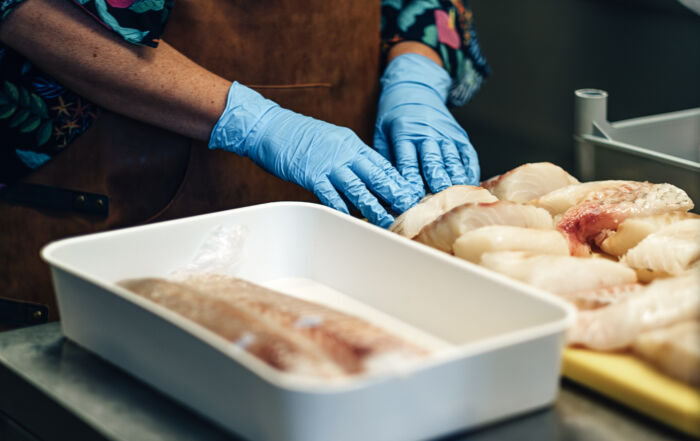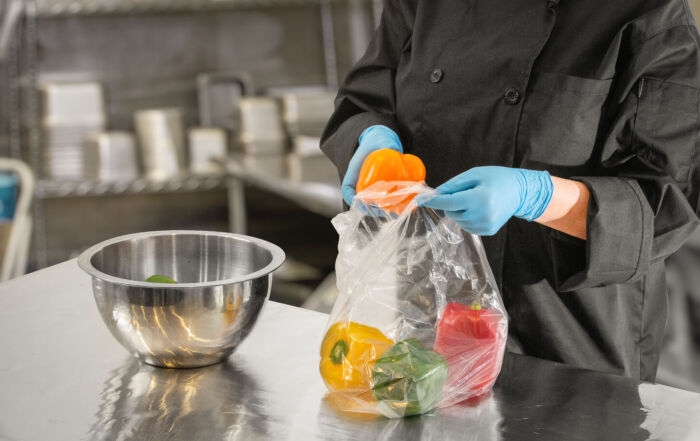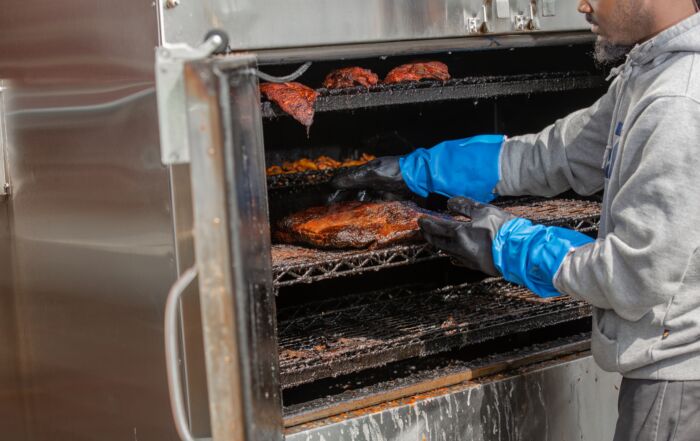What is the Greatest Threat to Food Safety?
What is the Greatest Threat to Food Safety?
Last week, I sat in on a webinar about the future of the foodservice industry, post-COVID. Of course, most of it is speculation, but it was interesting to hear the different perspectives on where the industry is heading and how the impact of COVID will be felt for years to come. One common theme discussed was whether working from home would become more prevalent. This, in turn, can have a profound impact on the traffic patterns in most operations, including quick service and fast casual restaurants.
Of course, as operators, you would welcome them back at any time of the day – as long as they come back! As more and more individuals receive the COVID vaccine, we hope they will be yearning to get back out to their local restaurant again to partake in their favorite dish or visit with their favorite server. And as operators, when you welcome them back to your establishment, whatever that new traffic pattern is, it is important that we don’t forget the safe food handling practices we practiced prior to COVID-19. Especially as we look to rebuild our staff to handle increased traffic flow.
Sometimes it is easy to forget the basics when you are in the heat of the dinner or lunch rush, which you may have not experienced for a while. Remind staff of the top five causes of foodborne illness outbreaks:
- Improper hot/cold holding temperatures of time and temperature control for safety foods,
- Improper cooking temperatures of food,
- Dirty and/or contaminated utensils and equipment,
- Poor employee health and hygiene, and
- Food from unsafe sources.
Not all of these items are in the direct control of your staff, certainly the management team has greater control over ensuring the food is procured from safe sources. But, the other four are, to a certain extent, are under the control of your staff. Let’s explore each of these a bit further.
When it comes to food safety, human error is the greatest threat to keeping food safe. Making sure to fine tune the details as we ramp up operations post COVID will help keep you, your employees, your customers, and your business safe.
Improper hot/cold holding temperatures of time and temperature control for safety foods. We’ve all learned about the temperature danger zone at some point in our career, and it has that name for a reason. Under the right conditions, bacteria can double every 10 to 30 minutes, so controlling the temperature of food is imperative to protecting your consumer. I remember being trained in my first foodservice job in how to “properly” cool chili, which we cooked up in large batches. We placed the hot chili into two-gallon containers, and placed them in the cooler. I distinctly remember being told to not attach the lids until they sat in the cooler for an hour, because that allowed heat to escape and the product would cool faster. Little did I know then that our practice was likely not going to permit the food to cool quick enough.
The food code outlines certain steps to take to cool foods properly, including 1) placing the food in shallow pans, 2) separating into thinner or small portions, 3) using rapid cooling equipment, 4) stirring the food while placed in an ice water bath, 5) using containers that facilitate heat transfer, and/or 6) adding ice as an ingredient. At our research Center at Kansas State, we’ve conducted two studies on cooling of food and it was fascinating to see which methods worked, and which methods did not. While you could read what we found at the website linked above, the most important thing for you and your operation to do is verify that your process works. Invest in some simple monitoring equipment, such as a data logger, and make sure the process you use to cool food will meet your state or local requirements for cooling.
Improper cooking temperatures of food. Most of our employees would all recognize the importance of proper cooking of food, which begs the question of why it is still one of the top five causes of foodborne disease? Cooking is the only way to kill bacteria, which is naturally occurring on most raw meats. While your employees may know the end-point cooking temperature of foods, are they really paying attention? If we as managers, supervisors, and owners don’t reinforce the need to take end-point cooking temperatures, do we really expect our staff to continue to do so?
One obstacle we come across when working with operators is the availability of quality, accurate, quick-reading thermometers. The simple fact is that employees will not take temperatures if they do not have the proper equipment to do so. Make sure you have these readily available for your staff and don’t make this the obstacle that we often times see that it is.
Dirty and/or contaminated utensils and equipment. Seems pretty simply, right? Making sure you use clean equipment is so fundamental, yet is one thing consumers and those new to working in foodservice operations often overlook. So many employees look around their clean kitchen at the end of their shift and feel a sense of accomplishment, a job well done. While that is certainly something to be proud of, clean doesn’t always mean sanitary and free from contaminants. Taking the time to sanitize is an important step in the cleaning process.
I used to preach to my staff about sanitizing everything when they started the day. They thought I was crazy, but you never know what happened on that “clean” surface overnight – or even in the 12 hours since the morning shift clocked out. Perhaps a delivery driver dropped product off over night and placed dirty boxes atop the clean counter and brushed off the soil contaminants with their hands, making it appear “clean” again. Who knows what condition the night shift left the kitchen! (Please tell me I am not the only one whose morning shift always seemed to have a grip with the evening shift and visa versa??).
Poor employee health and hygiene. If employee health and personal hygiene hasn’t been on the top of your mind the last year with COVID, I would be surprised. Perhaps this is one positive impact that COVID will have on our society and industry that will be here to stay – encouraging workers to stay home when they are ill. If employees did this, it would go a long way in helping to curb some foodborne illnesses. In one study, employee health and hygiene accounted for 64% of foodborne illness outbreaks[1].
It can be difficult for employees to make the decision to stay home when they are feeling ill. Sometimes they don’t want to leave their fellow employees and supervisors empty handed for the day or because they simply need the money that comes from their work, we need to have a system in place that supports employees in making this decision for the health of our customers, employees, and ourselves.
Along with employee health, encourage handwashing and keep encouraging it. As you know, this is one of the most important steps you can take to prevent foodborne illness. As employers and managers, sometimes handwashing is something we talk about during training, but we don’t always practice what we preach. Employees take their cues from their supervisors and managers, and if you don’t practice good handwashing skills, why should they? Make a point to wash your hands if you step into the kitchen to help out, no matter how small the task may seem.
Have you noticed a common theme as you read through this post? If not, the common theme is us…our employees, ourselves…humans. When it comes to food safety, human error is the greatest threat to keeping food safe. Making sure to fine tune the details as we ramp up operations post COVID will help keep you, your employees, your customers, and your business safe.
Check back in for the second blog post later this month where we will discuss a bit more about the human factor in food safety. In the meantime, if you are just getting up and running after a COVID shut down, be sure to check out our COVID reopening guidelines. Risk Nothing. [/vc_column_text][vc_separator][vc_column_text][1] Gould, L. H., Rosenblum, I., Nicholas, D., Phan, Q., & Jones, T. F. (2013). Contributing factors in restaurant-associated foodborne disease outbreaks, FoodNet sites, 2006 and 2007. Journal of food protection, 76(11), 1824–1828. https://doi.org/10.4315/0362-028X.JFP-13-037
READ MORE POSTS
Preventing Norovirus in your Foodservice Operation
Norovirus is one of the leading causes of vomiting and diarrhea in the United States, [...]
Safe Handling of Leftovers in Foodservice Operations
In any foodservice operation, leftovers are inevitable. After managing a family-style restaurant, where all-you-can eat [...]
Turn your Health Inspector into your Food Safety Ally
For many foodservice operators, keeping up with evolving regulations can feel like chasing a moving [...]
Time and Temperature: Why 41°F to 135°F?
In one of my last blogs, I mentioned the temperature danger zone, or TDZ, as [...]










